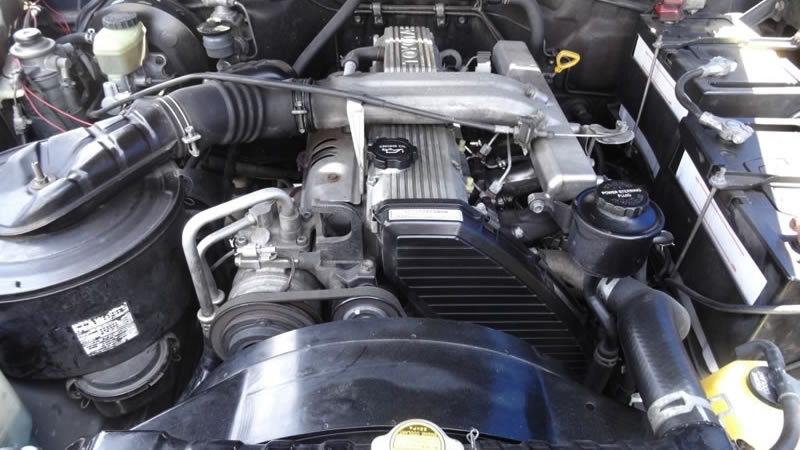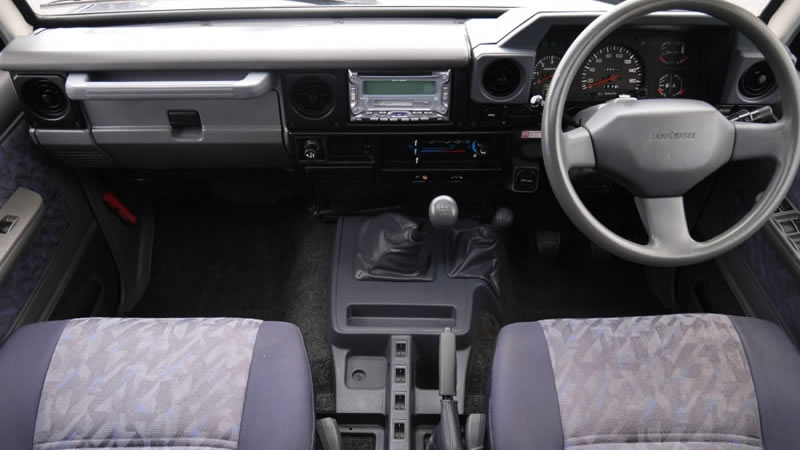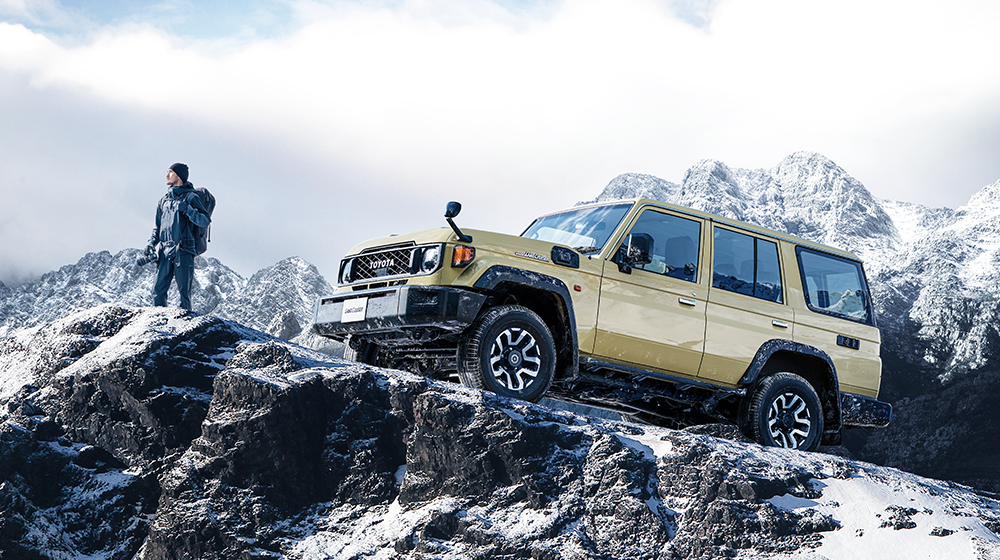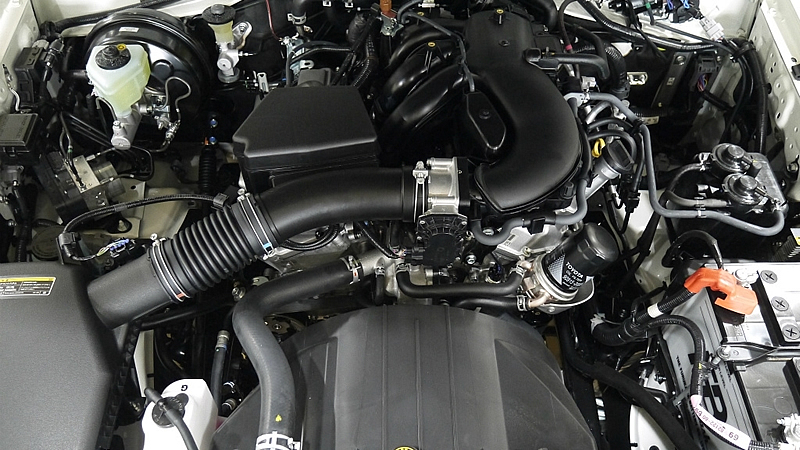The engine was completely redesigned in 1990
When introduced, the Land Cruiser 70 was equipped with a 4.2-liter inline 6-cylinder 1HZ type and a 3.5-liter inline 5-cylinder 1P-Z type NA diesel rather than the 1990’s diesel and diesel turbo engines, which were 3-liter inline 4 cylinders.
For Land Cruiser users around the world, Toyota’s strategy was to impress the world market with the introduction of the sensational 70, first with a complete redesign of the frame and body of the Land Cruiser 70, and then with a large-scale engine refresh with minor changes.
Engine development that matches the body size
The 1HZ type has the same specifications as the previous Land Cruiser 70 (HZJ81V).
The 1PZ type was a modular engine with one cylinder omitted from the 1HZ type. The relatively lightweight short-body BJ70/BJ70V mounted the 1PZ type to become the PZJ70/PZJ70V, and the turbo diesel-loaded BJ71V/BJ73V/BJ74V mounted the powerful 1HZ type to become the HZJ73V. The 1PZ type for the short body and the 1HZ type for the middle body were developed to match the body size.
What we must not forget here is the semi-long body specification that was introduced at the same time as these minor changes.
This was the Land Cruiser 70’s first mass-produced 4-door body realized by extending the wheelbase. Toyota wanted to increase the seating capacity, as well as the cargo room of the working vehicle. At this time, two types of 4-door models appeared, the HZJ77V with the 1HZ engine, and the PZJ77V with the 1PZ engine; the PZJ77V is a semi-long body basic model, is fenderless and has narrow tires for an HZJ77V.
Engine performance list
| Name | Format | Displacement (cc) | Maximum Output |
|---|---|---|---|
| 3B diesel engine | Inline 4-cylinder OHV | 3,431 | 98PS / 97 HP / 3,500rpm(94PS / 3,500rpm) |
| 13B-T type diesel turbo engine | Inline 4-cylinder OHV | 3,431 | 120PS / 118 HP /3,400rpm |
| 1HZ diesel engine | In-line 6-cylinder OHC | 4,163 | 135PS / 133 HP/ 3,600rpm(130PS / 3,800rpm) |
| 1PZ diesel engine | In-line 5-cylinder OHC | 3,469 | 115PS / 113 HP/ 4,000rpm |
The Land Cruiser 70 Suspension System

Choose the appropriate suspension for each body style
The suspension of the Land Cruiser 70 has the same basic structure as the Land Cruiser 40, which is a combination of leaf springs and rigid axles. Because it has a small number of parts, it is hard to break and maintenance is relatively easy.
However, as times changed, drivers are looking for comfort in their vehicles, too. Therefore, the suspension settings of the Land Cruiser 40 era were reviewed, and the suspension size and spring strength of the Land Cruiser 70 were redesigned for each short, middle, and semi-long body style. As a result, comfort was added alongside its off-road ability.
Suspension further improved in 1999
In 1999, a Toyota made a minor change to this suspension. The front leaf springs have been replaced with coil springs. This change was made to improve ride comfort, and the primary purpose was to dramatically improve steering stability at high speeds. This was mainly a countermeasure to the rapid development of highways in the Middle East and China. It was an improvement in response to the public’s request for a safer and more comfortable ride even on the highways.
Exterior and interior of Land Cruiser 70

Improved safety while ensuring drivability
While commercial vehicles are not only required to do their jobs, they must also be able to offer stability at high speeds on the road, and they must be safe. The Land Cruiser 70 keyed in on safety features that offered impact absorption during a crash that kept passengers and cargo safe.
To address this issue, the Land Cruiser 70 made full use of advanced collision simulation and computer analysis technology to improve the collapsibility (compression) of the frame and body.
In the interior, many of the hard metal parts have been changed to plastic, the unevenness around the instrument panel has been reduced, and highly cushioned pads have been incorporated around the front seats. In the Land Cruiser 70, improvements were made with an emphasis on improving safety while maintaining its drivability.




